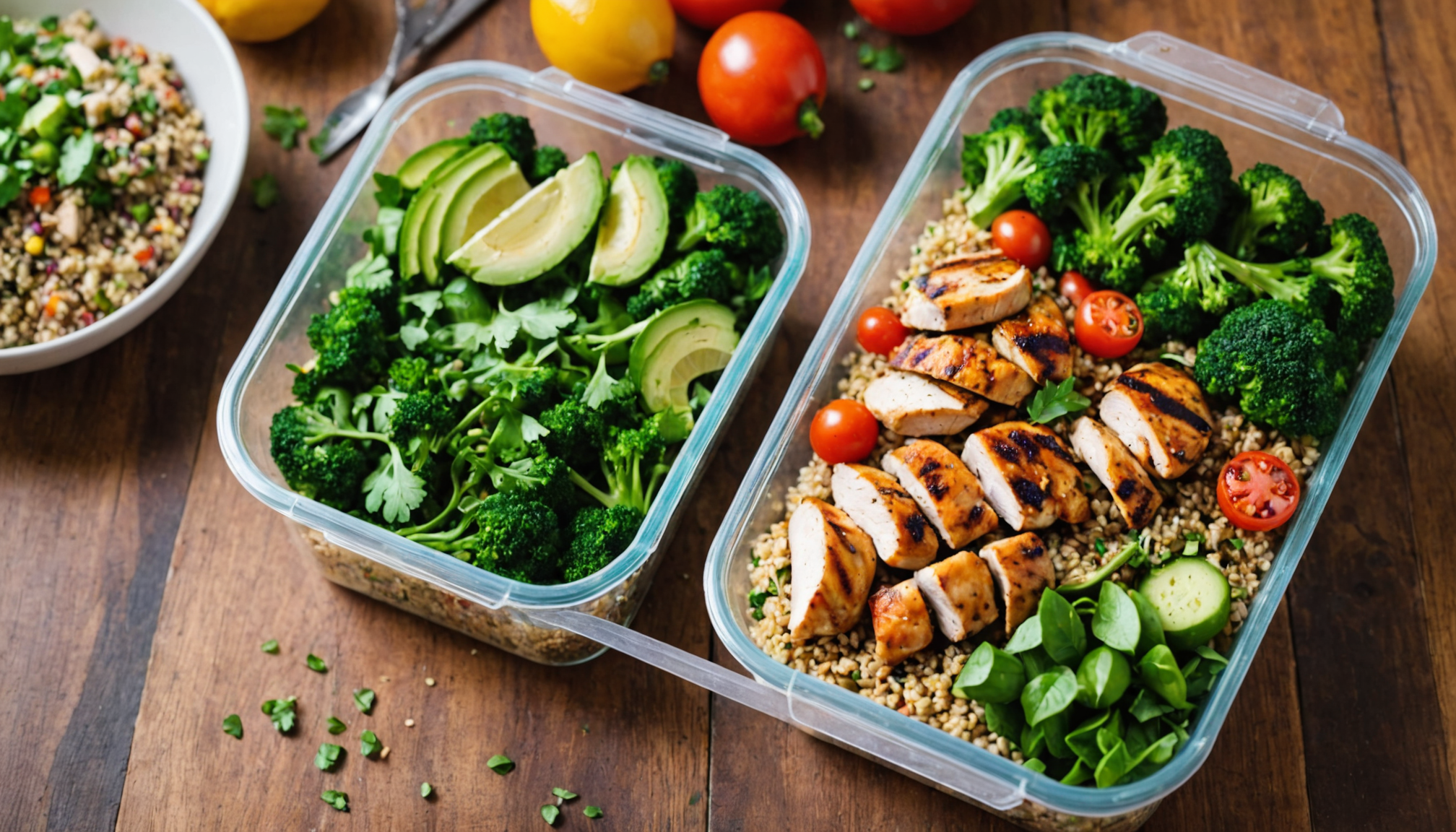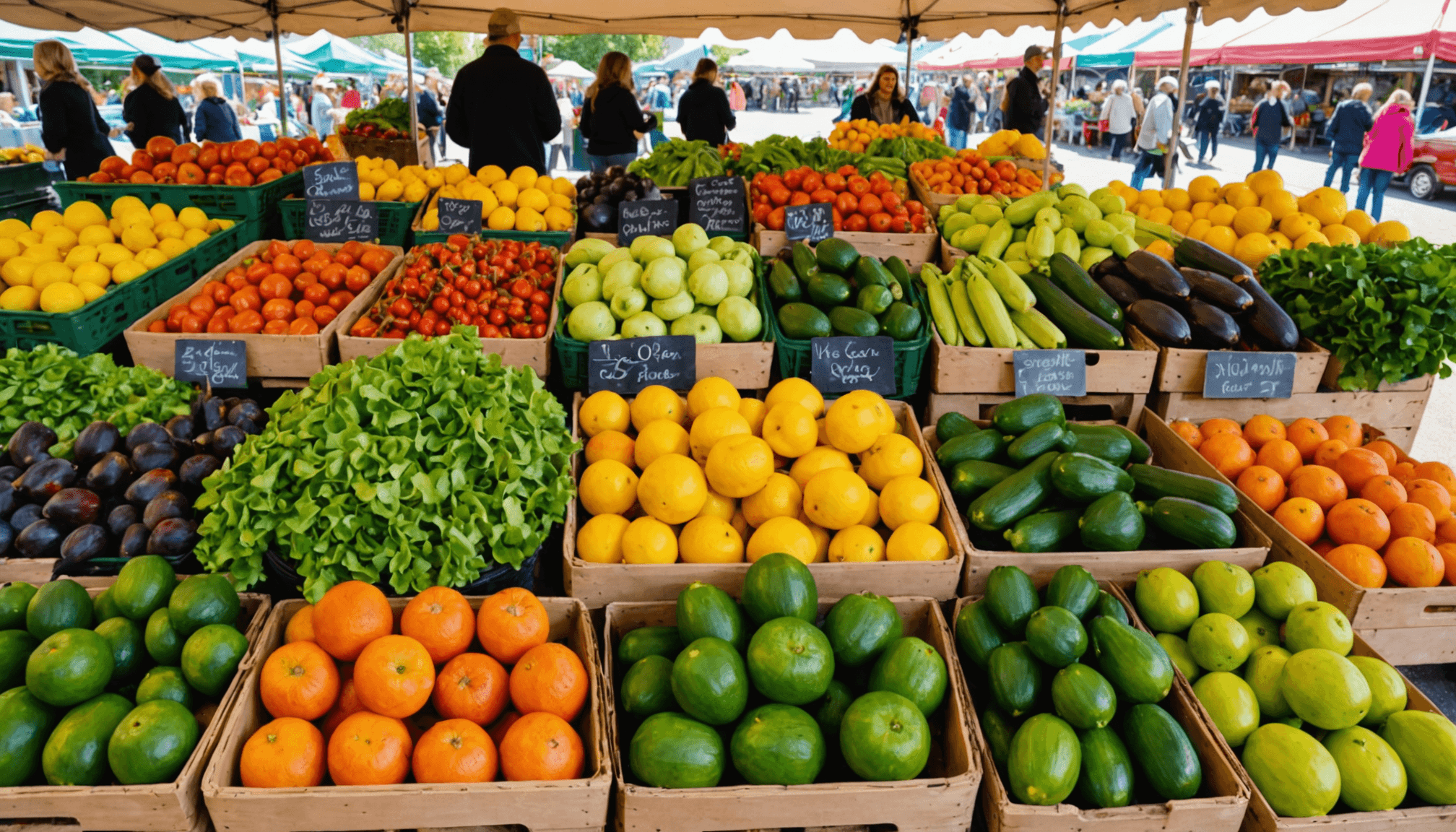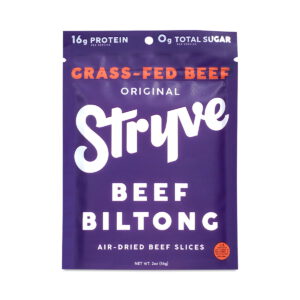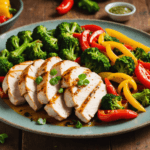- Healthy meal prep strategies
- Quick and nutritious snack ideas
- Budget-friendly grocery shopping tips
- Easy recipes for on-the-go meals
- Balancing convenience and nutrition
- Staying motivated and accountable
When it comes to grocery shopping for busy college students looking to maintain a healthy lifestyle, it’s essential to approach the process with a strategy that maximizes both nutritional value and convenience. Here are some actionable tips that can help streamline your grocery shopping experience.
1. Plan Your Meals
Before hitting the grocery store, dedicate some time to plan your meals for the week. Focus on easy-to-prep recipes that use similar ingredients to minimize waste. By planning, you can ensure that each meal is a balanced combination of protein, carbs, and fats, which is crucial for maintaining energy levels throughout your busy schedule.
2. Make a Shopping List
Composing a detailed shopping list based on your meal plan can prevent impulse buys and help you stick to healthy options. Organize it by sections of the store (produce, dairy, grains, etc.) to ensure a more efficient shopping trip. This can be especially effective for students who are short on time.
3. Shop the Perimeter of the Store
Most grocery stores are laid out with fresh produce, lean proteins, and dairy located around the perimeter. Spend your time here first, as these items tend to be fresher and more nutritious than processed foods found in the center aisles. Look for local produce when possible to support your community and reduce your carbon footprint.
4. Choose Budget-Friendly Foods
Being a student often means watching your budget closely. Opt for affordable staples such as:
- Brown rice
- Quinoa
- Canned beans and legumes
- Seasonal fruits and vegetables
- Frozen fruits and vegetables, which often retain their nutrients and are more cost-effective
Buying these items in bulk can further decrease costs and ensure you have plenty of healthy options available.
5. Explore Vegan Options
If you’re inclined towards a plant-based diet, there are countless vegan options that are both nutritious and budget-friendly. Incorporate ingredients like lentils, chickpeas, tofu, and tempeh into your meals. Not only are these protein sources versatile, but they also tend to be cheaper than meat. Do keep an eye out for sales on organic items to ensure you’re getting the best for your budget.
6. Check Ingredient Labels for Safety
Whether you’re shopping online or offline, always check the ingredient labels of the packaged foods you purchase. Look out for hidden sugars, excessive sodium, and artificial additives that can detract from healthy eating. Make a habit of prioritizing whole foods that are minimally processed, as they align with a nutritious diet.
7. Online Shopping Safety
If you prefer online shopping, be sure to use secure websites and verify the credibility of the seller. Look for customer reviews and ensure that they provide clear information about the sources of their products. This can be especially important when purchasing organic foods, as you want to ensure you’re receiving the quality you expect.
By implementing these strategies during your grocery shopping excursions, you can effortlessly support your journey towards healthy eating without sacrificing precious time or breaking the bank.
Quick and nutritious snack ideas
For busy college students, finding quick and nutritious snack options can be a game changer in maintaining energy levels and overall health. Healthy snacking is crucial as it provides a means to bridge the gap between meals and prevents the temptation of reaching for unhealthy convenience foods. Here are several ideas for snacks that are easy to prepare, accessible, and aligned with your nutritional goals.
One effective strategy is to create your own snack boxes or bags. These can be prepared in advance for the week, allowing you to grab them whenever hunger strikes. Consider including a variety of food groups to ensure a balance of nutrients. Here are some snack combinations to consider:
| Snack Type | Contents | Benefits |
|---|---|---|
| Protein-Packed | Greek yogurt with honey and sliced almonds | High in protein to keep you full longer. |
| Fruits & Nuts | Apple slices with almond butter | Provides healthy fats and fiber for sustained energy. |
| Veggies & Dip | Carrot sticks, cucumber slices, and hummus | Rich in vitamins and a good source of plant-based protein. |
| Whole Grain | Rice cakes topped with avocado and cherry tomatoes | Offers healthy fats and complex carbohydrates. |
| Simple & Sweet | Banana with a sprinkle of cinnamon | Natural sugar boost with potassium and fiber. |
Another fast option is to prepare energy balls that can be made in batches and stored in the fridge or freezer. These no-bake snacks are typically made from oats, nut butters, and a selection of mix-ins such as chocolate chips, dried fruits, or seeds. Easy recipes, like the following, can serve as a quick nutritional boost:
– Peanut Butter Energy Balls
– Ingredients:
– 1 cup rolled oats
– 1/2 cup peanut butter
– 1/4 cup honey
– 1/4 cup mini chocolate chips
– Instructions:
– Mix all ingredients in a bowl, roll into small balls, and refrigerate for at least 30 minutes.
These energy balls are portable and offer a combination of carbohydrates, protein, and healthy fats, making them ideal for on-the-go snacks.
For those who have limited time and kitchen access, consider store-prepared healthier options. Look for pre-packaged items such as nut and seed mixes, dark chocolate-covered pretzels, or whole-grain granola bars that boast minimal added sugars and wholesome ingredients. Always check the nutrition label to make sure you are choosing snacks that truly align with your goals for healthy eating.
Additionally, keep a stock of high-fiber, low-calorie snacks like popcorn or whole-grain crackers. These options can help curb cravings without adding excessive calories, allowing you to stay energized and focused through long study sessions or busy days on campus.
Incorporating these quick and nutritious snack ideas into your daily routine can not only aid in maintaining energy levels but also support a balanced diet essential for thriving in a rigorous academic environment.
Budget-friendly grocery shopping tips

If you’re eager to bolster your budgeting skills while shopping for healthy food options, a few strategic approaches can make a significant difference without compromising your nutritional goals. Keeping a mindful eye on costs and ensuring you purchase quality ingredients can seem daunting for busy college students, but with these practical tips, you can navigate your shopping trips like a pro.
1. Prioritize Whole Foods
Focus on buying whole foods such as fruits, vegetables, grains, and legumes, which are generally more affordable than processed or convenience foods. Not only do they offer more nutrition, but they often come at a lower price point. Bulk purchasing dry beans or lentils, for instance, can save you a lot compared to canned versions, and they pack in nutrition and fiber.
2. Embrace Seasonal and Local Produce
Make it a habit to check for seasonal fruits and vegetables. Not only are they fresher and tastier, but they’re also usually less expensive. Visit local farmers’ markets or join a Community Supported Agriculture (CSA) program to access organic goods at a more reasonable price. Supporting local farmers is also a great way to ensure quality and sustainability.
3. Buy Generic Brands
Don’t shy away from store brands. Often, generic products have the same quality as name-brand items but at a fraction of the price. This can apply to grains, cereals, and even plant-based proteins. Be sure to read labels carefully, and you may often find that the ingredients are nearly identical.
4. Plan for Leftovers
When planning meals, always consider making larger batches that can be reused during the week. Not only does this save time, but it also reduces food waste and maximizes the investment in groceries. For instance, a larger pot of quinoa or brown rice can serve as the base for multiple meals, varied with different vegetables and sauces.
5. Utilize Online Shopping Wisely
If you prefer shopping online, take advantage of delivery services that offer discounts or promotions, especially for first-time users. Create a shopping list based on your meal prep, and use filters for dietary preferences. This can help you not only locate vegan options seamlessly but can also help you spot deals on organic or bulk items that fit your budget.
6. Stay Mindful of Safety
When purchasing food items online, especially organic or specialty products, ensure you check customer reviews and ratings. Secure websites should have valid SSL certifications, which you can spot by looking for a padlock icon in your browser’s address bar. Confirm that they clearly outline sourcing practices and any safety standards met for food processing.
7. Prepare a Grocery Budget
Setting a strict grocery budget can help keep your spending in check. Allocate your funds weekly or monthly and stick to it as much as possible. This might mean opting for items that have longer shelf lives, like frozen vegetables or canned foods, which you can use as needed without immediate spoilage. Creating a “spending diary” can also shed light on your habits and areas where savings can occur.
With these budget-friendly grocery shopping tips, you can better manage your expenses while still committing to healthy eating practices that support your lifestyle as a busy college student. Every dollar saved can feel like a small victory, contributing to a healthier, more mindful way of eating without stretching your wallet thin.
Easy recipes for on-the-go meals
For busy college students on the go, preparing meals that are both healthy and convenient can be a challenge. However, with a few simple recipes, you can whip up nutritious meals in no time. Here are some quick meal ideas that cater to various tastes and preferences while ensuring you maintain a balanced diet.
Start with wraps and sandwiches. They are incredibly versatile and can be filled with a range of ingredients. For a satisfying wrap, use a whole wheat tortilla and fill it with lean proteins like grilled chicken or turkey, along with plenty of veggies such as spinach, bell peppers, and sliced cucumbers. Add a spread of hummus or avocado for healthy fats. Sandwiches are equally adaptable; try whole-grain bread topped with tuna salad made with Greek yogurt instead of mayo, which boosts the protein content and provides a creamy texture without excess fats.
Another excellent option is stir-fry. Utilizing a single pan makes cleanup a breeze and keeps cooking time to a minimum. Start with a base of quick-cooking quinoa or brown rice, then toss in frozen mixed vegetables and a protein source like tofu, shrimp, or chicken. A splash of low-sodium soy sauce or teriyaki sauce enhances the flavor while keeping it light. To save time, batch-cook portions of rice or quinoa at the beginning of the week and reheat as needed.
Soup is also a fantastic option for on-the-go meals. A simple vegetable soup can be prepared in a large pot and stored in individual containers for easy access. Use a base of pre-cut vegetables, canned tomatoes, and vegetable broth, adding beans or lentils for protein. Soups can be easily reheated and enjoyed either hot or cold, making them a perfect choice for lunch on busy days.
For students who prefer something even quicker, consider overnight oats. Combine rolled oats with your choice of milk (dairy or plant-based), yogurt, and toppings like fruits, nuts, or seeds before bed. In the morning, you’ll have a ready-to-eat nutritious breakfast that is not only filling but also provides long-lasting energy. Here’s a simple recipe to try:
– Basic Overnight Oats
– Ingredients:
– 1/2 cup rolled oats
– 1/2 cup milk (or yogurt)
– 1/2 banana, sliced
– 1 tablespoon chia seeds
– Optional: honey or maple syrup to taste
– Instructions:
– In a jar or bowl, combine oats, milk, sliced banana, and chia seeds. Stir to mix, then cover and refrigerate overnight. In the morning, drizzle with honey or syrup if desired and add any additional toppings.
Additionally, salads can easily become a hearty meal with the right ingredients. Start with a base of leafy greens, then add a variety of veggies, a protein source (such as grilled chicken, chickpeas, or hard-boiled eggs), and a handful of nuts or seeds for crunch. Top with a light vinaigrette or a simple drizzle of olive oil and lemon juice. Prepare your salad components in advance, so you can assemble your meal in minutes.
Incorporating these easy recipes into your routine can simplify meal prep, allowing you to enjoy healthy eating without feeling overwhelmed by your busy schedule. These quick meals not only save time but also ensure that you are fueling your body with the right nutrients to tackle the challenges of college life.
“Eating healthy doesn’t have to be complicated or time-consuming. Simple, fresh ingredients can create meals that nourish and energize.” – Unknown
Balancing convenience and nutrition
 Maintaining a balance between convenience and nutrition can be particularly challenging for busy college students, who often find themselves juggling classes, studying, and social activities. The key is to embrace strategies that prioritize health without demanding excessive time or effort. One of the most effective ways to navigate this challenge is by being intentional about food choices to ensure that nutritious meals are both accessible and appetizing.
Maintaining a balance between convenience and nutrition can be particularly challenging for busy college students, who often find themselves juggling classes, studying, and social activities. The key is to embrace strategies that prioritize health without demanding excessive time or effort. One of the most effective ways to navigate this challenge is by being intentional about food choices to ensure that nutritious meals are both accessible and appetizing.
A great starting point is to designate specific time slots for meal preparation throughout the week. Instead of scrambling for food on busy days, set aside a few hours during the weekend to cook in bulk. Preparing staples such as quinoa, brown rice, or grilled chicken can make it easy to assemble balanced meals quickly. Store these in portion-sized containers, so when hunger strikes, all you need to do is mix and match your prepped ingredients with fresh veggies, sauces, or herbs for a flavor boost.
Another essential approach is to create a well-stocked pantry. Fill it with healthy, non-perishable items such as canned beans, lentils, whole grain pastas, and spices. These can serve as the backbone for many quick meals. For example, a can of black beans can be transformed into a refreshing salad with diced tomatoes, corn, avocado, and a squeeze of lime, while whole grain pasta can be tossed with olive oil, garlic, and sautéed vegetables for a satisfying dish.
Pre-packaged meal kits are also an option worth considering. Look for options that prioritize fresh ingredients and whole foods. They can offer convenience without steering you toward unhealthy elements. Be sure to read ingredient lists carefully to ensure they align with your nutritional goals. Alternatively, consider subscription services that deliver fresh, healthy ingredients directly to your door, making meal preparation accessible even during the busiest weeks.
Balancing convenience and nutrition isn’t merely about what food you consume, but also about understanding the importance of meal timing. For instance, planning your meals around your class schedule can prevent last-minute unhealthy choices. Prioritize nutrient-dense meals when you need energy most—before exams or intense study sessions—to help enhance concentration and overall performance.
Finally, don’t underestimate the power of quick nutrient-dense smoothies or shakes. These can provide a significant boost of vitamins, minerals, and proteins in just a matter of minutes. Delve into combinations of leafy greens, frozen fruits, yogurt, or nut butters. A smoothie can serve as a quick breakfast or post-workout meal, fueling your body efficiently while keeping prep time to a minimum.
Think about how adopting these methods can reshape your relationship with food. With just a little creativity and planning, you can enjoy the benefits of a nutritious diet without overwhelming your schedule. Explore different recipes, seek mentorship from peers who prioritize healthy eating, and continuously enrich your knowledge about nutrition. With each small adjustment, you may start to notice the positive impacts on your energy, focus, and overall well-being.
- What are some quick meal ideas for busy college students?
- Quick meal ideas include wraps and sandwiches with lean proteins, stir-fry meals using pre-cooked rice or quinoa, and overnight oats. These options are easy to prepare and can be made in advance to save time during the week.
- How can I ensure I’m eating a balanced diet?
- To eat a balanced diet, focus on incorporating a variety of food groups in each meal, including proteins, whole grains, fruits, and vegetables. Planning meals and snacks ahead of time can help maintain this balance throughout your busy week.
- Is it better to cook meals in bulk or prepare them daily?
- Cooking meals in bulk is often more time-efficient and allows for convenient, healthy options throughout the week. By preparing and storing items in portioned containers, you can easily mix and match ingredients for quick meals.
- Are frozen fruits and vegetables nutritious?
- Yes, frozen fruits and vegetables retain their nutritional value well and can be a cost-effective option. They are often frozen at peak ripeness, ensuring that they are packed with vitamins and minerals.
- How can I make grocery shopping more efficient?
- Make a list based on a meal plan to stay focused and minimize impulse purchases. Organizing the list by store sections can also help streamline the shopping process, saving you time.
- What snacks are good for maintaining energy levels?
- Healthy snacks such as nuts, yogurt with fruits, vegetable sticks with hummus, or whole grain granola bars provide sustained energy. These options can help bridge the gap between meals and keep you fueled throughout the day.
- How can I make healthier choices when dining out?
- When dining out, look for menu options that include plenty of vegetables, lean proteins, and whole grains. Consider asking for dressings or sauces on the side, and aim for grilled or baked preparations instead of fried foods.
Staying motivated and accountable
Staying motivated and accountable in your journey toward healthy eating can often be the key challenge for busy college students. With countless demands on your time and energy, forming habits that encourage consistency can feel overwhelming. However, there are practical steps you can take to keep yourself on track and elevate your wellness journey.
1. Set Clear, Attainable Goals
Begin by setting specific, achievable goals related to your diet and lifestyle. Whether it’s eating a certain number of servings of vegetables each day or cooking three meals a week, having measurable objectives can provide a sense of accomplishment. Break these goals into manageable steps and celebrate small victories to maintain your motivation.
2. Keep a Food Diary
Consider keeping a food diary to track what you eat and how you feel. This habit can help you identify patterns in your eating behavior and make necessary adjustments. Apps like MyFitnessPal or simple paper journals allow you to log meals, snacks, and hydration, providing a valuable snapshot of your dietary habits. Reflecting on your entries can help you recognize when you’re making healthier choices or veering off track.
3. Find a Support System
Having a support system can make a world of difference. Partner with a friend or roommate who shares your health goals and hold each other accountable. You can set challenges, share meal preps, or simply check in with one another on your progress. Joining campus wellness groups or clubs can also connect you with like-minded individuals and create a sense of community that inspires you to stay committed.
4. Meal Prep Together
Meal prepping doesn’t have to be a solitary activity. Involving friends in the process can make it fun and social while also keeping you motivated. Organize a weekly meal prep party where everyone contributes a dish. This ensures you have healthy meals ready to go and different flavor profiles to keep things exciting. Plus, it’s a great opportunity to share recipes and cooking tips!
5. Leverage Online Communities
Take advantage of online platforms such as social media groups or forums focused on healthy eating and student life. Engaging with these communities can provide you with new recipes, encourage you during tough times, and offer strategies for overcoming common challenges. Sites like Reddit’s r/MealPrepSunday or Instagram accounts dedicated to healthy eating can serve as daily inspiration.
6. Track Your Progress
To remain accountable, consider setting aside a few minutes each week to assess your progress. Reflect on what’s working and where you might need improvement. This could include evaluating your meal planning efficiency, noting any slip-ups in your eating patterns, and adjusting your goals accordingly. Use apps that provide analytics on your dietary habits to maintain a clear overview of your status.
7. Prioritize Self-Compassion
It’s essential to recognize that healthy eating is a journey, not a destination. There will be days when life gets busier, and your choices may not align with your goals. Instead of being hard on yourself, practice self-compassion. Accept that setbacks are part of the process and focus on what you can learn from them to move forward. This mindset will foster resilience and help you stay committed in the long run.
By embracing these strategies, you can cultivate the motivation and accountability needed to maintain healthy eating habits throughout your college experience. The journey may have its ups and downs, but every step toward better nutrition is a success worth celebrating.
New Customers Offer!
Free Gift for the new customer
$24 Value, When You Subscrib Visit Thrive Market












